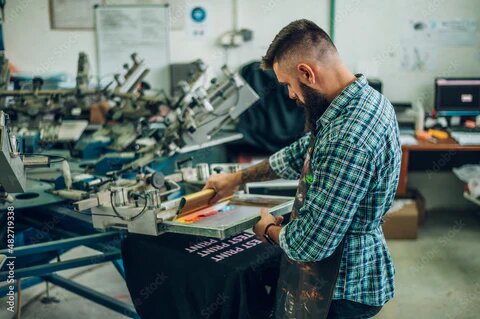Silk screen printing, also known as screen printing, is a versatile and popular printing technique used across various industries. One crucial component of this process is the mesh used in the screens. The choice of material for the mesh can significantly impact the quality and durability of the prints. In this article, we’ll explore the best materials for silk screen meshes and their unique properties.
Polyester Mesh
Polyester mesh is one of the most commonly used materials for silk screen printing due to its durability and versatility.
Properties of Polyester Mesh:
- Durability: Polyester meshes are highly durable, making them suitable for long-term use. They can withstand the pressure applied during the printing process without stretching or breaking easily.
- Chemical Resistance: Polyester meshes are resistant to chemicals, including various inks and cleaning solvents used in screen printing. This resistance ensures that the mesh maintains its integrity over time, leading to consistent print quality.
- Tension Stability: Polyester meshes offer excellent tension stability, meaning they can maintain their tension level even after multiple uses. This stability is crucial for achieving precise and accurate prints consistently.
- Affordability: Polyester meshes are relatively affordable compared to other materials, making them a cost-effective option for screen printing businesses.
Nylon Mesh
Nylon mesh is another popular choice for silk screen printing, known for its strength and fine mesh count.
Properties of Nylon Mesh:
- Strength: Nylon meshes are known for their exceptional strength, which allows them to withstand high tension during the printing process. This strength contributes to the longevity of the mesh, making it suitable for heavy-duty printing applications.
- Fine Mesh Count: Nylon meshes can achieve a higher mesh count compared to other materials, resulting in finer details and sharper prints. This capability makes nylon meshes ideal for printing intricate designs and graphics.
- Dimensional Stability: Nylon meshes exhibit excellent dimensional stability, meaning they maintain their shape and size even under high tension. This stability ensures consistent print registration and prevents distortion during the printing process.
- Chemical Resistance: Like polyester meshes, nylon meshes are resistant to chemicals commonly used in screen printing, ensuring their durability and longevity.
Stainless Steel Mesh
Stainless steel mesh is favored for its durability and resistance to corrosion, making it suitable for demanding printing environments.
Properties of Stainless Steel Mesh:
- Durability: Stainless steel meshes are incredibly durable and can withstand harsh printing conditions without deteriorating. They are resistant to wear and tear, making them ideal for high-volume printing operations.
- Corrosion Resistance: Stainless steel meshes are highly resistant to corrosion, even when exposed to moisture and chemicals. This resistance ensures that the mesh maintains its structural integrity over time, resulting in consistent print quality.
- High Tension Strength: Stainless steel meshes can withstand high tension levels without stretching or distorting, allowing for precise and accurate prints. This strength makes them suitable for printing on various substrates, including rigid materials.
- Longevity: Due to their exceptional durability and resistance to corrosion, stainless steel meshes have a longer lifespan compared to other materials. While they may be more expensive upfront, their longevity makes them a cost-effective investment in the long run.
Conclusion:
The choice of material for silk screen meshes plays a crucial role in determining the quality, durability, and longevity of prints. Polyester, nylon, and stainless steel are among the most commonly used materials, each offering unique properties suited to different printing applications. Whether it’s durability, fine detail reproduction, or resistance to corrosion, selecting the right material is essential for achieving optimal results in silk screen printing. By understanding the properties of each material, printers can make informed decisions to enhance their printing processes and deliver exceptional quality prints consistently.


